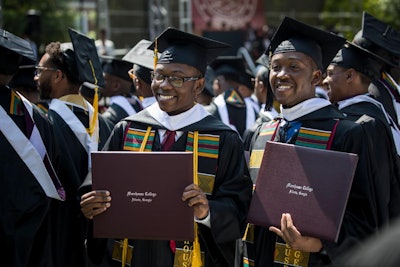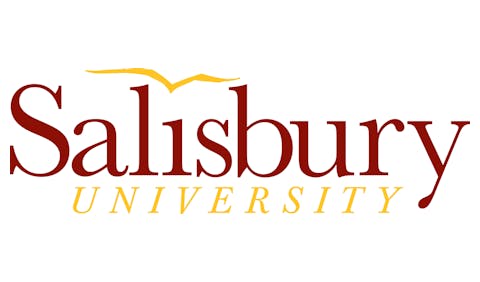
Those were among the major points that several HBCU leaders and experts made to Diverse, as a new wave of HBCU leaders prepared to sit at the helm of these beloved institutions. Their ascension comes at a time when the higher education landscape is undergoing radical shifts and threats to longstanding student programs and revenue streams, such as the Pell grant. Amid the convergence of threats, experts stressed the need for a strong focus on providing meaningful programs that lead to employment and building a culture of caring.
“The future of HBCUs will be determined by their contemporary relevance, responsiveness, excellence, and competitiveness, not their historical accomplishment,” says Dr. Charlie Nelms, a higher education consultant who has served as chancellor at North Carolina Central University, an HBCU.
Nelms says that schools must do more to offer minors or interdisciplinary programming that enable students to approach problems from multiple perspectives.
“Most of the challenges that we’re dealing with as a global enterprise require an interdisciplinary approach to problem solving, and so students need an understanding of not only the humanities, but they need an appreciation and understanding of the sciences,” Nelms says. “To the extent that we embed those kinds of things into the curricula, we have a high probability of building a graduate who will be in higher demand by the workforce.”
Dr. Marybeth Gasman, the Samuel DeWitt Proctor Endowed Chair in Education & Distinguished Professor Graduate School of Education at Rutgers University - New Brunswick, also stressed the need for coursework that makes students competitive.
“I would stress innovation, specifically in terms of technology upgrades around AI and preparing students for the future of work,” Gasman says.
Dr. Jermaine Whirl, who in April 2025 became the 15th president of Savannah State University, Georgia’s oldest public HBCU, says that his institution constantly reviews federal Bureau of Labor Statistics data to “keep the pulse of industry for our programs.”
“We also connect with our alumni, foundation board members, and individuals of influence and affluence who provide us with good insights,” Whirl says. “Aligning this information with our new strategic plan is how we’ll move the needle for students,” he adds, referencing his school’s efforts to offer micro-credentials, badges, accelerated degree completion programs and a host of noncredit continuing education programs to students.
A culture of caring
Moving forward, Nelms urges HBCU leaders to prioritize high-quality support to students, mentorship, and competitive scholarships.
“A college education is more than a collection of classes,” Nelms says. “One of the distinguishing characteristics of a high quality, responsive institution – period but especially an HBCU – is a culture of caring, and you can’t fake caring. It has to be real. It has to be part and parcel of the institutional culture and institutional responsiveness.”
Nelms says HBCU leaders must build deeper relationships with alumni – starting from the moment they became students – and reframe the way people talk about financially supporting their alma maters.
“We need to approach the support we’re asking for as an investment as opposed to a donation,” Nelms says. “Whenever people invest, they become vested not only in the brand of the institution but in the individual success of students who matriculate to and through the institution.”
That has to be a message, Nelms says, “from the day those students arrive until the day they leave, and we have to really invest in contemporary ways of communicating with people,” he continues. “It’s really wonderful to have an alumni magazine, but what about the people who may prefer social media? We need to diversify our approach to connecting with our alumni.” Dr. Walter M. Kimbrough
Dr. Walter M. Kimbrough
“There’s still way too many alums who expect the president to go and find a Robert Smith and ask him to donate a couple million dollars,” Kimbrough says in reference to the billionaire businessman Robert F. Smith, who donated $34 million to pay off the debt of Morehouse’s Class of 2019.
“We keep looking for some rich person to come and give us a lot of money and they don’t have any connection with us,” Kimbrough says. “It can happen but it’s rare and I think people expect presidents to just go out and hit a home run and then the alums don’t have to do anything but just tell the president what to do.”
The threat to HBCUs
Dr. David A. Thomas, the former president at Morehouse College – and the one who oversaw the Robert F. Smith donation – says the most significant threat facing HBCUs in 2025 is a “convergence of ideological, economic, and demographic forces that seek to undermine the very principles on which these institutions were built: access, truth, and justice.”
In addition to declining federal support, shifting enrollment patterns and threats to critical funding streams, Thomas points to legislative actions aimed at suppressing academic freedom and dismantling diversity, equity, and inclusion initiatives —initiatives he says are foundational to the mission of HBCUs – as major challenges that confront HBCUs.
“These factors, coupled with disinformation campaigns that distort the value of liberal arts and public scholarship, risk rendering HBCUs less competitive and less visible at a time when the nation most needs our clarity, moral leadership, and educational excellence,” Thomas says. “If we do not act with urgency, we risk becoming collateral damage in a broader effort to dilute the transformative power of higher education.”
Thomas made those remarks as he prepared to hand the reins of Morehouse over to Dr. F. DuBois Bowman, who assumed the presidency of Morehouse on July 15, 2025. Bowman most recently served as dean of the University of Michigan School of Public Health.
Kimbrough says it’s important for newly minted HBCU leaders not to treat the institutions like other places where they may have worked. He says he’s not worried about that with incoming president Dr. Willie L. Todd Jr., his successor at Talladega. Todd holds both a Master of Education in English education and a Bachelor of Arts in English from Albany State University, an HBCU, and is a member of the HBCU Learning Ecosystem.
“You can’t treat an HBCU like a regional institution that is predominantly white,” Kimbrough says, noting that two thirds of HBCU students are eligible for Pell grants.
“That means you’re dealing with a student population that is very much influenced by everyday life situations,” Kimbrough says. “You could have a student that drops out because their car doesn’t work anymore or the mom loses a job” and the student needs to help out at home.
“Those are the kinds of things that you might not deal with at another institution,” Kimbrough says. “They have those same students but they’re fewer in number. So, you know, they don’t have to deal with them as much.
“You’re dealing with the financially fragile student body for the most part, or the way I always try to say it: HBCUs are under-resourced institutions that serve under-resource people,” Kimbrough continues. “And when you work at a place like that, there’s so many different things that will impact you.”
Gasman says HBCUs have faced “quite a few external threats” since the Trump administration took over in January 2025.
“I think the most pressing relates to diversity, equity, and inclusion (DEI) backlash, even though HBCUs don’t fall under this category,” Gasman says. “Regardless, grants have been canceled, programs have been canceled, and public HBCUs in conservative states have had to contend with attacks on DEI in their courses, student services functions, policies, and the selection of their presidents.”
But not all threats are external. Kimbrough cited the need for HBCUs to “fix governance.”
“We’ve got to have better governance that works with presidents and not against them,” Kimbrough says. He said part of the problem behind the short-lived tenure for so many HBCU presidents is the relationship with the board “goes south and then the person’s gone.”
Gasman agrees, adding that stabilizing leadership at these institutions is essential.
“Internally, HBCUs often contend with challenges that are a reflection of long-standing and evolving concerns,” Gasman says. “For example, leadership turnover is higher than ever, creating instability in some cases. A constant issue is the lack of training of governing boards in terms of higher education governance. This leads to a misalignment with the president’s vision and sometimes mission creep.”
HBCUs, she says, should invest in succession planning, board development, and greater president-board alignment to ensure stability.
Thomas says the urgency of the moment requires bold leadership.
“The moment is not waiting on you,” Thomas says to his fellow HBCU brother and sister presidents. “You have stepped into leadership at a time when HBCUs must not only defend their right to exist, but reassert their right to lead.”
He adds that HBCU presidents should be the institutional memory of resistance and renaissance in American higher education.
“But memory alone won’t sustain us,” Thomas says of HBCUs. “Presidents must be bold in aligning mission with innovation, unapologetic in asserting our value, and vigilant in protecting our autonomy.”
He urges HBCU leaders to build their endowments, fortify their faculty and invest in research that “speaks truth to power.”
“And above all, keep your students at the center—they are not only our legacy, they are our leverage,” Thomas says. “In this season of heightened scrutiny and structural volatility, the world needs HBCU leadership rooted in moral clarity and strategic conviction. Rise to meet that need.”















